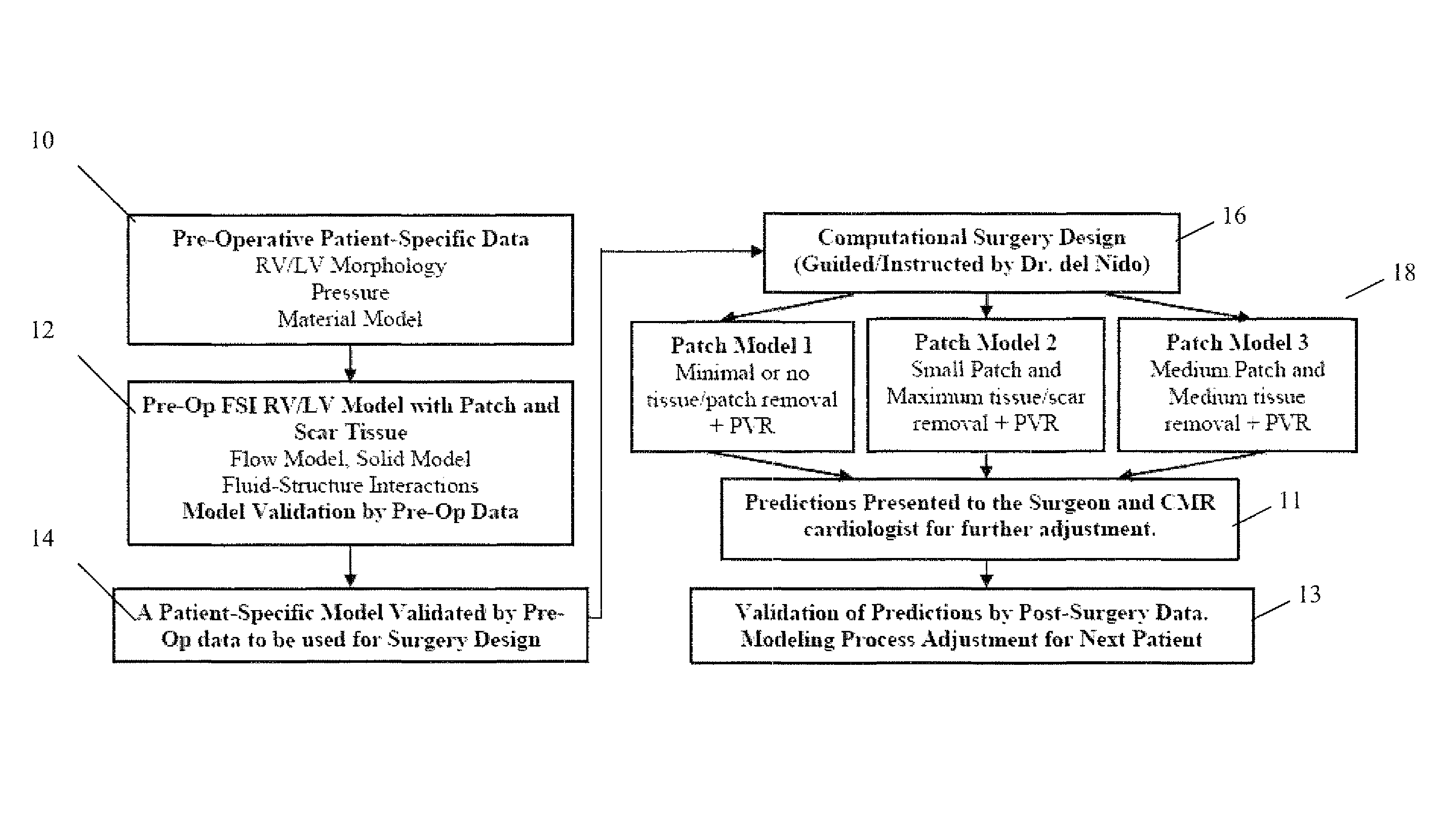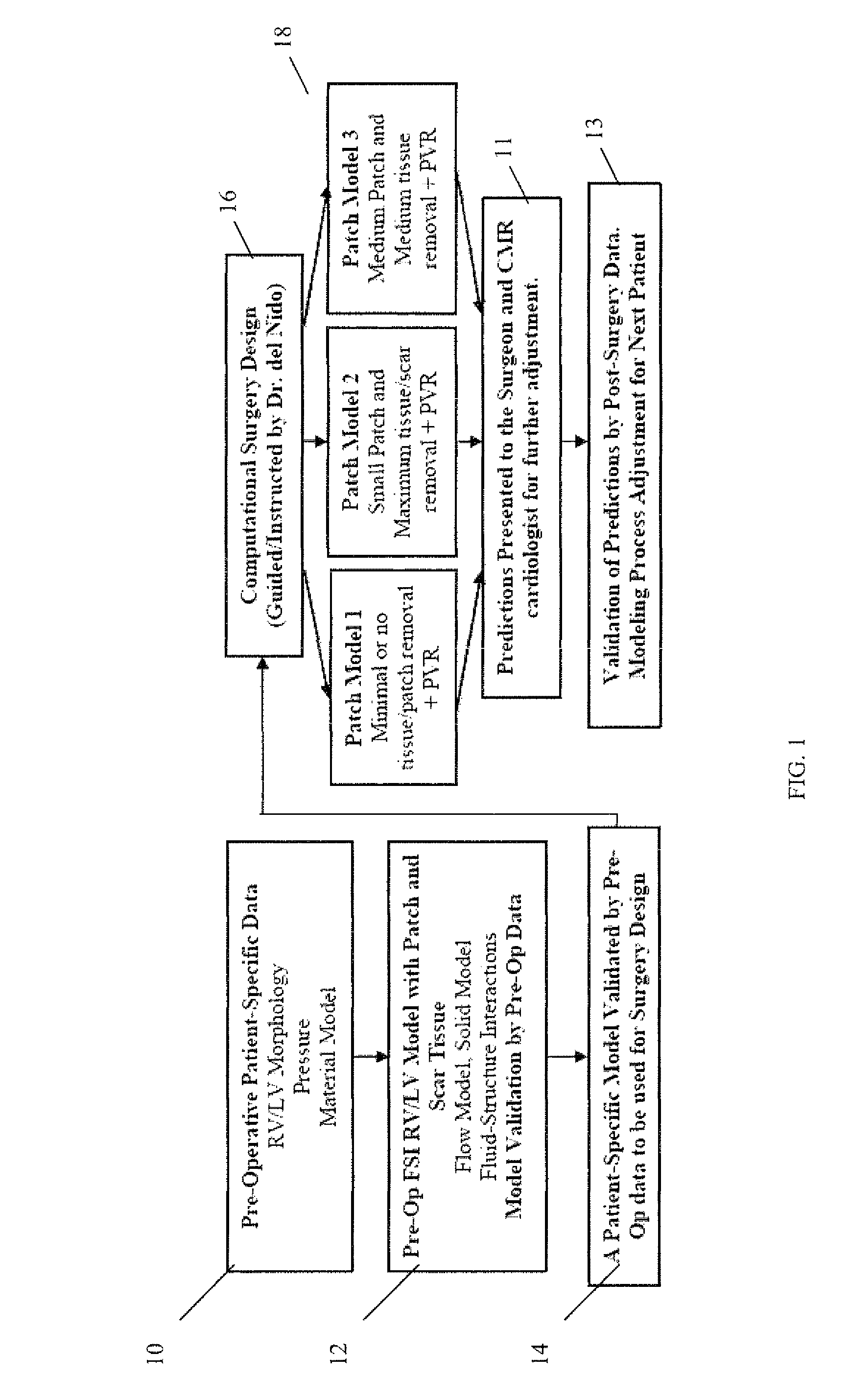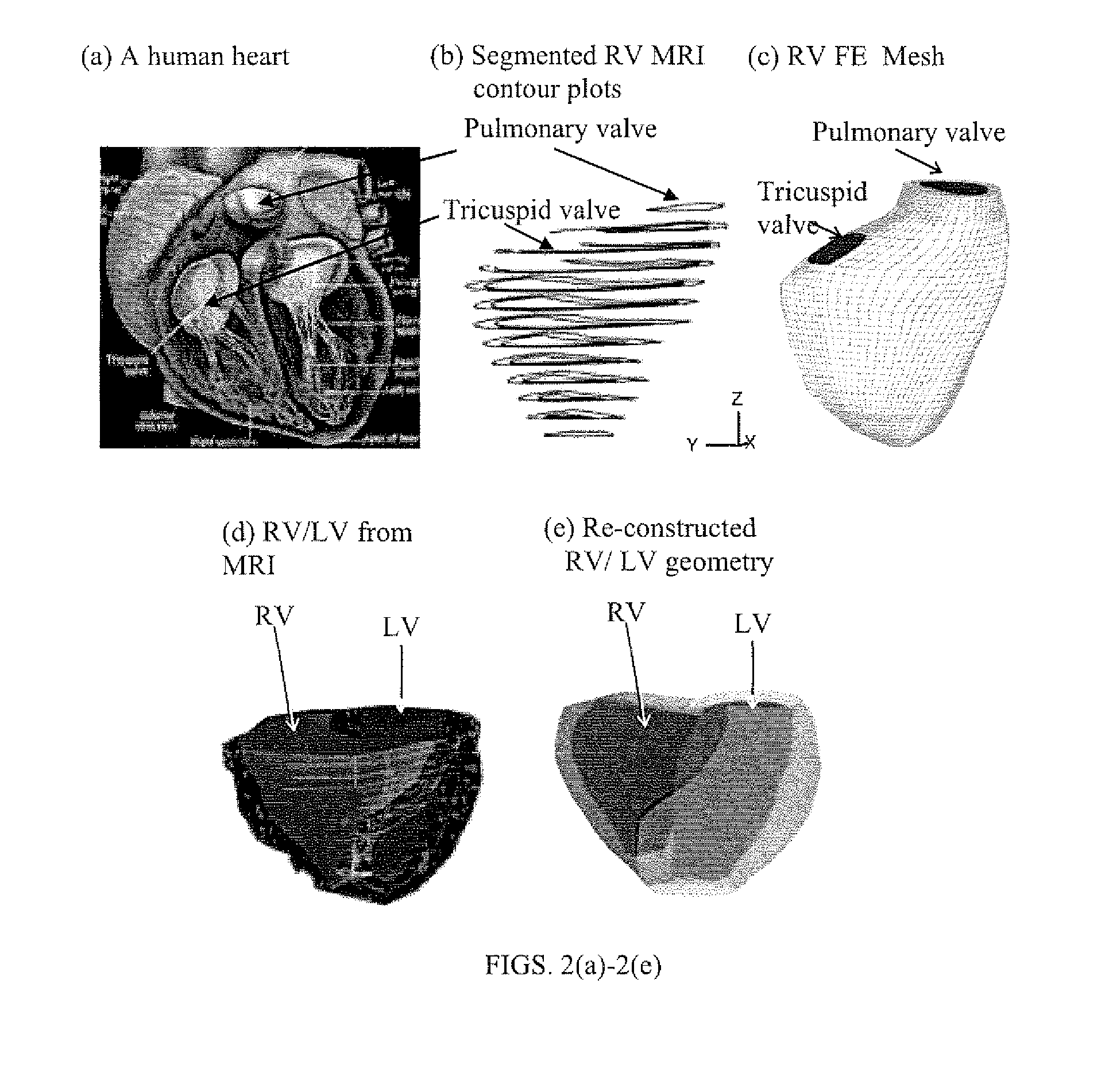Patient-specific image-based computational modeling and techniques for human heart surgery optimization
a computational modeling and patient technology, applied in the field of patient-specific image-based computational modeling and human heart surgery optimization, can solve the problems of premature death and impaired functional capacity
- Summary
- Abstract
- Description
- Claims
- Application Information
AI Technical Summary
Benefits of technology
Problems solved by technology
Method used
Image
Examples
example 1
Data Acquisition using CMR
[0054]CMR is ideally suited for noninvasive evaluation of cardiovascular anatomy and function. Quantitative CMR techniques can accurately measure biventricular systolic function irrespective of chamber geometry and quantify blood flow in any desired location, including quantification of pulmonary regurgitation (PR). CMR has been used extensively by the applicant and by other investigators in patients with Tetralogy of Fallot (ToF) and its accuracy and reproducibility in assessing RV dimensions, function and quantification of PR have been validated. The applicant routinely performs CMR in patients with repaired ToF once they reach an age when they can cooperate with the examination (usually by age 10-11 years). Preliminary patient-specific ventricle morphologies, cardiac motions and flow data are acquired using standardized clinical protocols. CMR data can be obtained pre- and post-operation. CMR is used to acquire patient-specific ventricle geometry, heart ...
example 2
Preliminary Results from 3D MRI-Based Computational Models
[0055]The motion of the human heart and related blood flow and structure stress / strain behaviors are very complex. The purpose of the computational modeling and simulation according to the present invention is to choose the proper models which include important factors concerning RV function and that can be solved within a reasonable time (e.g., 24 hours) so that surgeons can use the computational analysis to aid and optimize RV remodeling surgery. A 3D MRI-based RV-LV combination model with FSI was selected because a) it is based on clinically available patient-specific data (morphology, pressure, and flow); b) the FSI model makes it possible to combine fluid and structure models to analyze RV function with different patch designs and represents a starting point for many further improvements; c) it can provide accurate and reliable assessment of RV function prior to surgery. Its predictions for RV function, such as SV and EF...
example 3
Computational Simulations for Optimal Surgical Procedures and Patch Design
[0074]RV / LV morphology, pressure conditions and flow rate in the inflow and outflow regions are acquired from patients prior to pulmonary valve replacement and RV remodeling surgeries. All the geometrical data is entered into the ADINA system, pixel by pixel. Then computational lines, surfaces, and volumes are created under the ADINA environment to generate the computational mesh and finite element model. Fluid domain is created using the RV inner surface as the FSI interface. Valve positions are determined based on flow data quantified from CMR. The full FSI model is given by equations given above. The fully-coupled FSI RV / LV combination model is then solved by ADINA to obtain full 3D flow, deformation and stress-strain solutions which serve as the basis for mechanical analysis of the present invention, RV cardiac function analysis, surgical procedure design and patch optimization.
[0075]FIGS. 13(a)-13(b) give...
PUM
 Login to View More
Login to View More Abstract
Description
Claims
Application Information
 Login to View More
Login to View More - R&D
- Intellectual Property
- Life Sciences
- Materials
- Tech Scout
- Unparalleled Data Quality
- Higher Quality Content
- 60% Fewer Hallucinations
Browse by: Latest US Patents, China's latest patents, Technical Efficacy Thesaurus, Application Domain, Technology Topic, Popular Technical Reports.
© 2025 PatSnap. All rights reserved.Legal|Privacy policy|Modern Slavery Act Transparency Statement|Sitemap|About US| Contact US: help@patsnap.com



